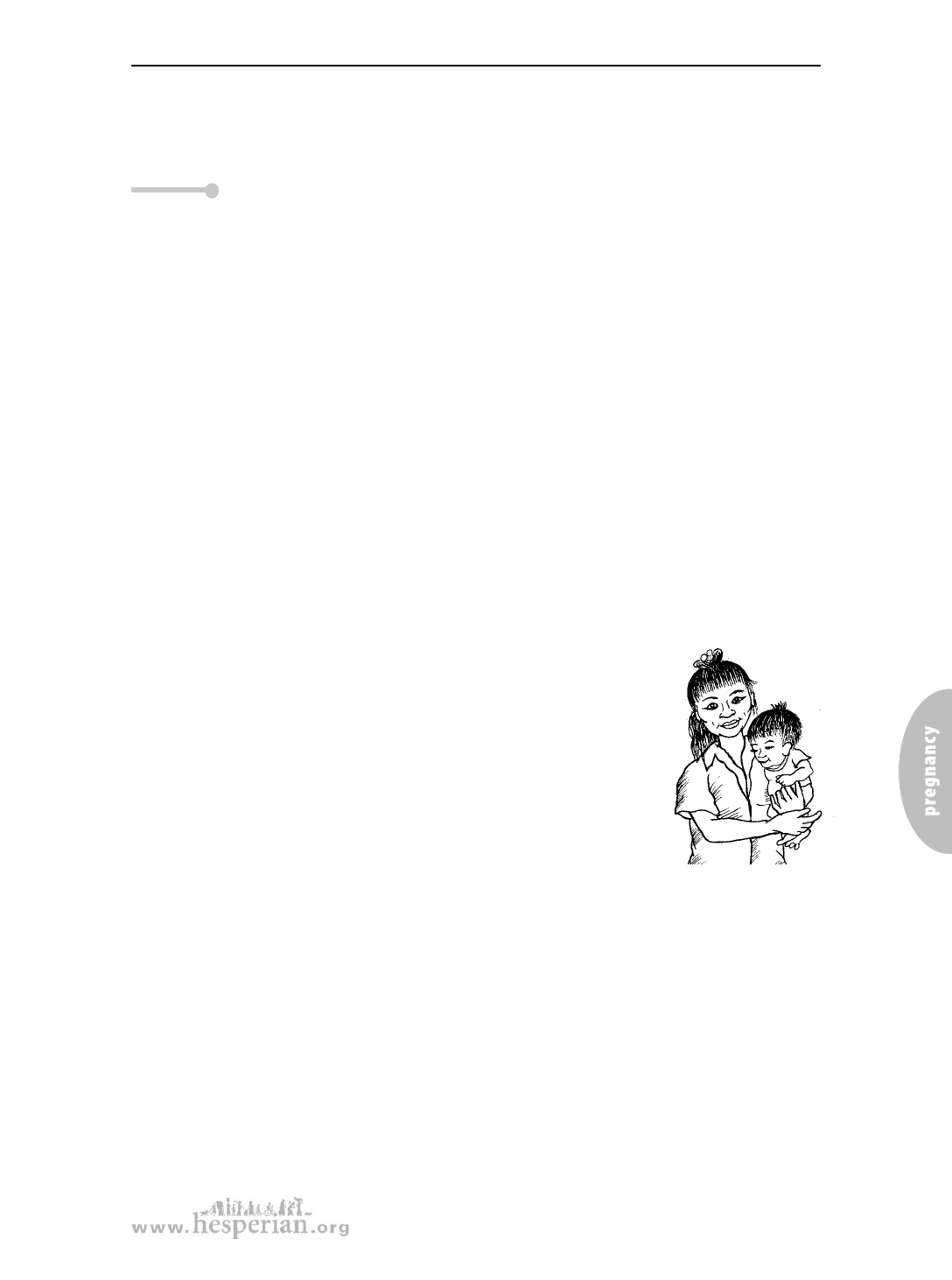
Questions in a pregnancy health history
Care for pregnant women with HIV
Give a pregnant woman with HIV the same respect and care you would give
any woman.
Note: Many women find out for the first time that they have HIV when
they are pregnant. These women need support to cope with this news,
and what it may mean for their families. They also need health workers
and midwives to take care not to discuss a woman’s HIV status with
anyone (including each other) without her knowledge and consent.
Pregnant women with HIV need to take even more care with their health than
others. Eating well, avoiding infections, and treating illnesses quickly are most
important. Encourage a pregnant woman with HIV to see you or another health
worker regularly. Watch these women for signs of other sexually transmitted
infections (see Chapter 18). Help them prevent malaria (see page 98) and get
tested for TB (tuberculosis). Help women (and their partners, if needed) get
treatment for these or any other infections.
A woman with HIV who is 3 months pregnant or more can also prevent many
infections (pneumonia, diarrhea, malaria, and others) by taking a low-cost
antibiotic called cotrimoxazole every day (see page 478).
It is important that a pregnant woman with HIV gets treated for her HIV as well
as getting normal care in pregnancy. Help her find medical care nearby, and if
possible an HIV treatment program. If there is a well-equipped medical center in
your area, it would be better for her to give birth there.
Medicines that fight HIV can protect a baby
Without taking steps to prevent it, about 1 out of every 4 babies
born to women with HIV is infected with HIV when the baby is
born. Pregnant women with HIV can take HIV medicines (ART)
while they are pregnant, and greatly lessen the risk of HIV
infection for the baby.
Some women with HIV need ART for their own health (see
pages 335 and 492). Some pregnant women with HIV take
ART only as prevention for the baby, and stop sometime after
the birth. The baby needs to take medicines after being born. See page 495 for more
about these uses of ART. (Also see page 293 to learn about preventing the spread of
HIV while breastfeeding.)
Along with causing infections, HIV can also cause a woman to have more
problems with her pregnancy.
These include:
• miscarriage, especially late in pregnancy (loss of pregnancy and stillbirth).
• early birth (being on ART also makes this more likely).
• bleeding and infection after birth.
A midwife should be prepared for any of these if caring for a pregnant woman
with HIV.
A Book for Midwives (2010)
101